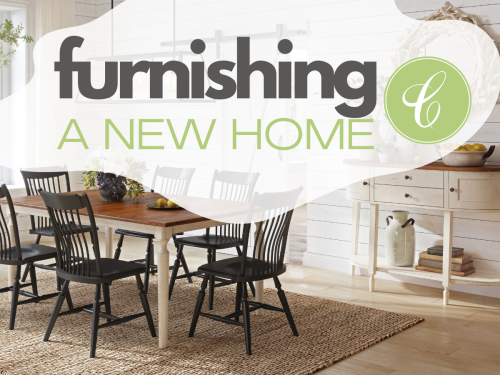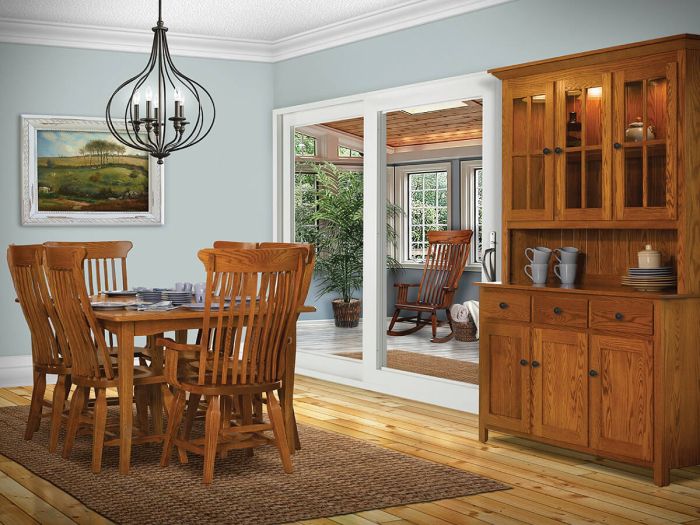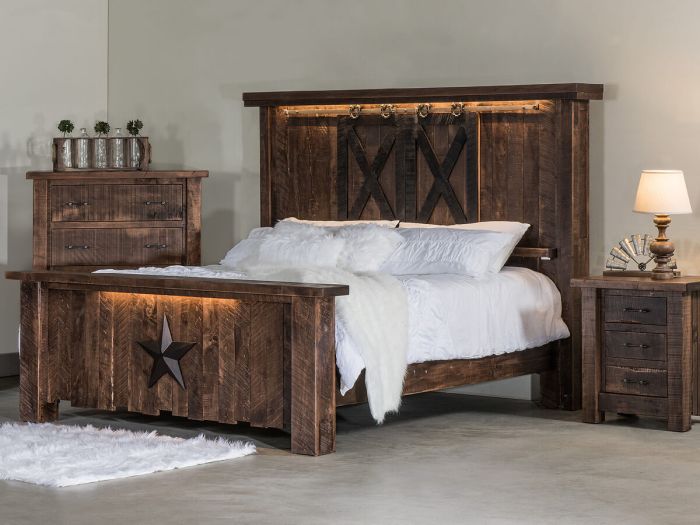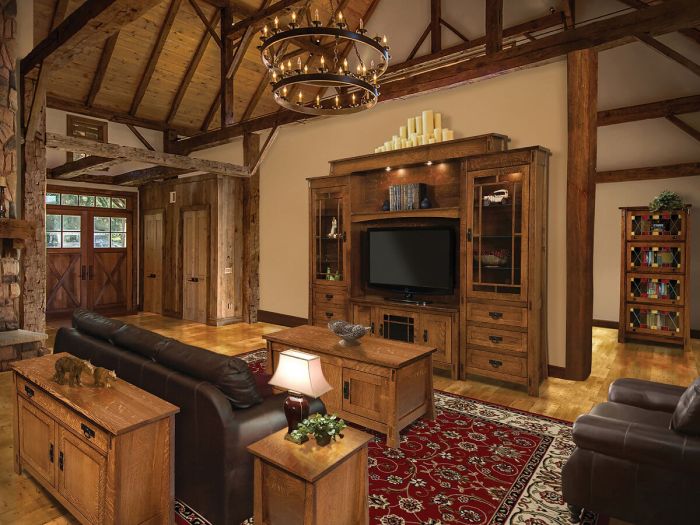Tips for Furnishing a New Home
By Bailiegh Basham · December 7, 2022
A new house is a blank canvas, a fresh start. While some may view this as an exciting opportunity to reassess past style choices and flex creative muscles, it’s also natural to feel overwhelmed by the sea of possibilities and all that must be done.
To be clear, there are countless ways to go about furnishing a new home. However, this guide will help you organize your thoughts and inspiration, systematically tackle various challenges, and spend your money wisely.
Choose a Decor Theme to Guide All Other New Home Furniture Decisions
Furnishing a new home all starts with a game plan, even if vague. Perhaps you want to base a room’s color scheme on a specific piece of art. Or perhaps you want guests to feel like they’re on vacation by furnishing your spare bedroom with coastal cottage pieces. Think about your favorite places, peruse design publications, and truly reflect on:
- What decor themes inspire you? Examples can include modern farmhouse, queen anne, rustic elegance, and everything in between.
- What colors and textures are you drawn towards? Do you like the idea of vibrant patterns? Natural grains? Bold colors? Pastels?
- What would you want to be the focal point of the room? Understanding whether you’d want everyone’s eyes to be drawn towards the artwork, an accent piece of furniture, or perhaps the nature outside your window will help inform supplementary home furnishing purchases.
These early decisions will serve as the starting point for all upcoming furnishing purchases and arrangements. Without loose guardrails in place, you risk having your new home’s furniture feel disjointed and random.
Assess Any Existing Furniture For Your New Home
Review your current furniture collection, bucketing pieces into one of three categories:
- Must keep - self-explanatory, these are the pieces with which you refuse to part and around which all other decor decisions will be made.
- Negotiable - these are the pieces that are okay. They adequately fulfill their purpose but do little else. Perhaps it's a couch that has one too many stains, a rocking chair that feels vicarious, or simply a table you’re tired of looking at day after day. These are the pieces you’re fine with . . . for now. However, you’ll want to either fix or replace them when budget and time allow.
- Must go - Perhaps your counter-height stools will no longer have a counter around which to sit. Or there’s an extra office chair you’ve held onto for no particular reason. Furnishing a new home is the perfect time to shed the deadweight of unnecessary or unwanted furniture.
Of course, there is a fourth category, nonexistent. When prioritizing furniture purchases for the new home, these will be given general priority. For instance, let’s say your new home has smaller closets or overhead lighting than your previous place; in such a scenario, you’d need to buy furnishings to fulfill these needs.
Are There Any Furnishings That Aren’t Worth Moving to a New Home?
While there is no universal answer to this question, it’s common to regard a new home as an opportunity to refresh the following furnishings:
- Mattresses - A good mattress may last up to a decade, but most have much shorter windows. If your mattress is more than five years old, a new home may be the right time to refresh what you sleep on each night (especially considering how cumbersome they are to move).
- Rugs - There are two reasons you may want to ditch your current rugs, starting with the fact that you bought them for your current space and not your new floor plan. It’s unlikely they’ll fit the dimensions and vibe of your new home. Secondly, rugs wear down with foot traffic and the weight of furniture, so they’re unlikely to look like new.
- Extensive collections - This refers to the dozens of unread books accumulated over the decades, the figurines tucked in rarely seen shelf corners, and the duplicate china set you rarely use. Use moving into a new home as an opportunity to edit your collections with a critical eye.
Additionally, compare the cost of moving the item versus how much it would cost to replace it. Also, reflect upon the estimated longevity of the piece. A solid wood bed frame built to last a lifetime? It’ll be more than worth the cost of moving? But a bed frame made from subpar materials with a wobbly leg? It’ll be replaced eventually, so why not make the switch now?
There are many ways to responsibly get rid of unwanted furnishings. Examples include hosting a garage sale, selling items on Facebook Market, or donating them to charities for tax write-offs. In some cases, second-hand stores will even transport larger pieces on your behalf!
Create an Overall Budget and a List of Priorities
By knowing both your budget and your most immediate purchase needs, you won’t spend too much on a really cool nightstand but be left eating meals on top of a cardboard box.
As a rule of thumb, make sure that each room has “the bones” prior to filling in the details. In the living room, this may mean enough seating for immediate family members and a coffee table. In the dining room, this would mean a table set, and the bedroom would be incomplete without a bedframe and designated storage solution.
Though obvious, it’s important to state that not every room has equal importance. Think about where you spend the most time when prioritizing; furnishing the basement game room or guest bathroom shouldn’t be given the same weight as the living room.
List out what pieces you want to buy in which order, giving each item a ballpark budget (with a margin of error). It helps to do research upfront with articles like How Much Does a Wooden Dining Room Table Cost to get a better understanding of what is reasonable to expect.
Look to Comprehensive Furniture Sets to Lessen Stress
Buying furniture for your new home from curated sets is like bowling with the bumpers turned on; you get the freedom to pick and choose, but there’s minimal risk of “screwing up.” For example, the Tahari Rustic Living Room Set has 21 different pieces, including multiple types of entertainment centers, TV consoles, bookshelves, and tables. By being able to handpick each item rather than buy it as a package, you’re able to select the furniture that best fits the specific space. What’s more, you’re able to return at a later time and immediately find complementary pieces.
Don’t Pressure Yourself to “Finalize” the Look of the Space Right Away
When confronting an empty corner of the mantle or bare hallway walls, you have two choices: to hurriedly buy something that fits the space or to take your time to be selective. Obviously, we suggest the latter. Perhaps you’ll pick up a custom art piece during your next vacation to Rome or want to hang a photograph from your upcoming birthday celebration. Each example will mean significantly more than anything you buy merely to “fill the space.”
You can apply a very similar philosophy when it comes to utilizing your furniture budget. If given the choice between buying cheaply made engineered wood furniture today or waiting a few months to invest in quality pieces, it makes sense to spend the little extra on what will last longer and make you happy.
Our point is that no home decor decision should be made from a source of pressure rather than love. So take your time, peruse your options, and embrace the current empty spaces for their exciting opportunities.




